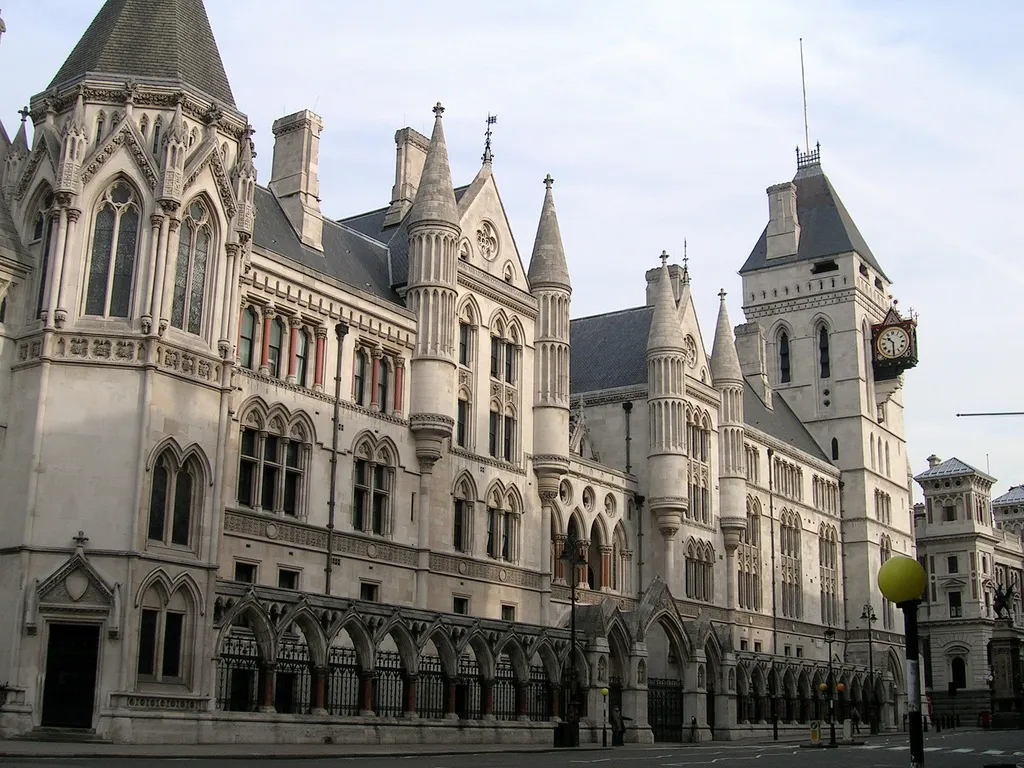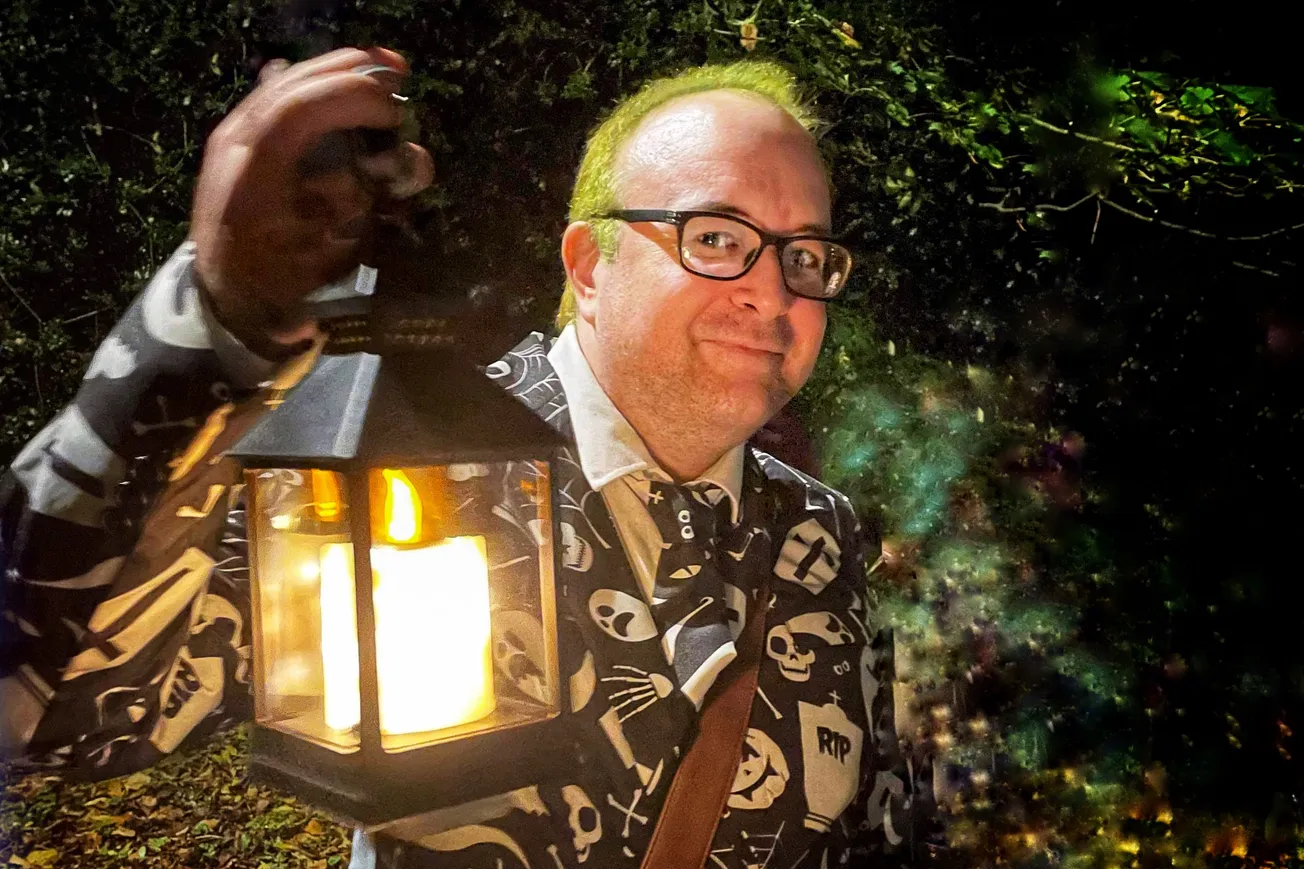By his own admission, Robin Hughes has been on a bit of a journey. As a young man, the 1969 book Sheffield: Emerging City had a big impact on him. The Sheffield City Council paperback was fairly typical of municipal publications of the time: full of optimism and bold predictions about the future. Looking back, its obsession with the car and predictions of urban motorways running through the centre of Sheffield might feel a bit scary to us now. But the book made him realise that his city wasn't a fixed thing: that you could change and develop it in the way you wanted to.
Fast forward more than 50 years and Hughes now works with Hallamshire Historic Buildings, an organisation that seeks to preserve Sheffield’s heritage for future generations. Like many people, he became more interested in heritage as he got older, realising that too much bold development can squeeze out aspects of the city’s past that should be valued and preserved. But to portray him as someone who wants to keep the city as it is at all costs would be a mistake. He believes you can do both.
The name Hallamshire Historic Buildings evokes a certain kind of image: timber-framed Tudor houses, grand Georgian mansions and imposing Victorian public buildings. But their latest project — the former Cole Brothers building on Barker’s Pool — hasn’t yet reached its 60th birthday. Since John Lewis finally vacated their former flagship store earlier this year, there have been a vast array of suggestions about what to do with the building. However, as is often the case with twentieth-century architecture, the default position seems to be demolition.

Along with several other Sheffield heritage organisations, HHB recently penned an open letter extolling the virtues of the building as a prime example of the way Sheffield reimagined the department store in the 1960s. The city lost six of its most historic stores during the Second World War, and therefore had to rebuild them in a way that didn’t happen anywhere else. For the letter writers, the proposed demolition of the building is a prime example of the way we don’t value its twentieth-century heritage anywhere near as much as it should.
In this reading of the city’s heritage, while Cole Brothers is not necessarily a building everybody is going to like and admire, it’s still an important building in the history of Sheffield which tells the story of how the city made itself anew in the postwar period. “It's not just a bog standard department store — it’s rather more than that,” Hughes says. “If we’ve been lucky enough to inherit this building, we should be celebrating it and saying this is wonderful, because not many people have got this sort of thing and this is why it's different.”
A recent submission from HHB to Historic England arguing that the building should be listed read as follows:
The building is an early and compelling essay by one of the chief protagonists and importers of European Modernist architecture in a style and discipline of significant pedigree, intelligently and evidently adapted to a retail application and perfectly fitted to the historic setting, while responding to the ambitions of a city that had positioned itself at the forefront of architectural innovation.

Instead of defaulting to demolition, the challenge should be to think about how we can make it work for a new purpose. This has already been done with many of the city’s former cutlery factories which have long been transformed into residential properties and offices and are now being turned into things like food halls. “Many of these are quite poorly built and not great architecturally,” he says. “But they're stuffed with meaning and stories and are absolutely rooted in the heart of the city.”
The current arguments over John Lewis have echoes of what happened to Park Hill more than 20 years ago. Even after it was listed in the late 1990s, the Lib Dems under the leadership of Paul Scriven campaigned (and won) on a manifesto to knock the building down. Even today, whenever the building is discussed on social media, plenty of people line up to describe it as an eyesore that should have been demolished long ago. But Hughes believes arguments over its beauty or lack thereof miss the point. “Park Hill isn’t grade II*-listed on some kind of whim: it's of international importance,” he says. “The important thing is that Sheffield has got that and nobody else has.”
Regular readers will know I have a vested interest in this. As a Park Hill resident, I regularly see groups of school pupils and students swarming around the complex. Tours of the vast structure also take place with residents opening up the building to let people look around the streets in the sky. Just last week I noticed a post on social media from someone who had got off a train at Sheffield station on the way to Edinburgh specifically to look at Park Hill.

Similar arguments have taken place about much of Sheffield’s twentieth-century architecture. Castle House (built in 1962) was listed in the face of major opposition but has gone on to be a huge success with the arrival of Kommune and the National Videogames Museum. “I think had it not been listed, the default would have been ‘let's knock it down and put something else there instead’,” Hughes tells me. “But because there was a break on that momentum, other uses had to be found and it's now another exciting destination.”
But despite this success story, the lessons of the past don’t seem to have been learned. Hughes believes the recent city centre consultation was worded in such a way to get the answer on Cole Brothers that many in the council wanted. Suggestions in a report that large amounts of asbestos in the building make it harder to repurpose are mere sophistry, he adds. Asbestos needs removing whether you knock down the building or reuse it.
Heritage, ultimately, is what you've inherited from others and what you think is worth passing on. Hughes thinks a great deal of what we have is far more worth passing on to others to the next generation than we've previously thought. Sheffield has a tendency not to fully appreciate what we’ve got until it’s gone.

“We have to think of ourselves as stewards,” he tells me. “I've gone through phases of seeing new buildings go up and not really liking them, or even looking at old buildings and thinking that one’s a keeper or that one isn’t but it's often still too early to tell. If we're quick to dispense with the things that aren't immediately visually appealing to us. We're depriving others of the chance to make that judgement and there won't be another.”
Heritage clearly matters a great deal to people and should be seen as a good thing on its own terms. But there's also another dimension which is actually seeing it as a strategic resource; something that can do good in the world. This means not just holding on to what we've got but making something of it as well. And it’s here he thinks that Sheffield really does miss out.
“There's a bit of a sense of we're not York, we're not Chester, why would anybody want to come here,” he tells me. “But I live here and I love it.” He says he assumes other people would like to come to Sheffield and get excited about the same stuff that excites him “so that's certainly something that we need to do better.”

It can feel slightly distasteful to impose hard-nosed economic logic on such an emotive subject: something that people respond to with their hearts as much as their heads. But Hughes is keen to stress that heritage isn’t merely “pretty stuff to look at”. There are no robust figures for Sheffield itself but the sector is thought to contribute around £240m to the city’s economy every year: almost a quarter of a billion pounds. But this isn’t just how many tourists a city gets going to a stately home or a museum. It is what businesses and which kinds of workers the historic areas bring in.
A quarter of a billion pounds is obviously a lot of money, but Hughes thinks with investment it could be even more. “We need to see it as a resource,” he says. “If we don't, we'll miss a trick and other cities will get there first. But there are a great many people who have yet to go on that journey, some of whom are decision-makers, and we have to coax them along a bit.”
Seen this way, development versus heritage is a false dichotomy. Rather than being in competition with each other, they are in fact pulling in the same direction. Good future development uses the city’s existing heritage and having good heritage assets is a contributor to good development. The one makes the other better.

Heritage buildings can often seem like devilishly difficult problems to be surmounted. Newer structures like Cole Brothers or older ones like the Old Town Hall sometimes feel like a kind of Gordian Knot: too difficult to bring back, but too important to lose. But unfortunately, there are no hard and fast rules. There’s no simple equation we can apply to new or old buildings that will give us an answer as to what we should do.
Instead, Hughes argues we should simply try to be more thoughtful about the buildings we have inherited from our forebears and what future generations might think of the decisions we make about them. The current residents of Sheffield are stewards of the city’s heritage: no more (and no less) important than any other people who have lived in this city during the 800 years plus of its history. Ultimately, it’s up to us to choose.
A second part of our series on Sheffield’s heritage focusing on the contested future of the city’s historic Castlegate area will follow next week.
Comments
How to comment:
If you are already a member,
click here to sign in
and leave a comment.
If you aren't a member,
sign up here
to be able to leave a comment.
To add your photo, click here to create a profile on Gravatar.







